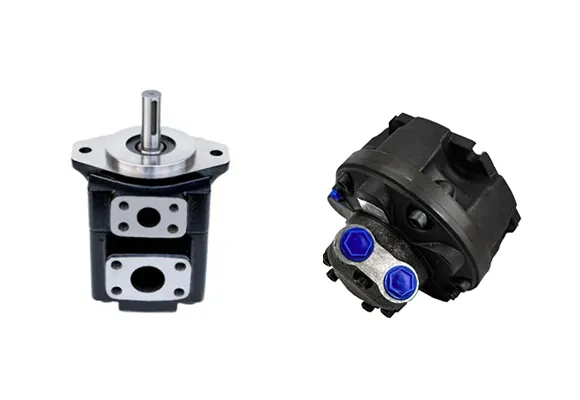How Hydraulic Pumps and Motors Work Together
Introduction:
hydraulic pumps and motors play a crucial role in modern industrial applications.
These two devices utilize fluid pressure to transmit power and create motion in various machinery systems.
In this article, we will explore how Hydraulic Pumps and motors work together.
1. Working Principle of Hydraulic Pumps:
A hydraulic pump is a device that generates power by utilizing fluid pressure.
It commonly uses hydraulic oil, which is pressurized by the pump to create motion.
Hydraulic pumps operate through pumping action and fluid pressure, and there are various types available.
Examples include piston pumps, Gear Pumps, and Vane Pumps.
The working principle of a pump involves generating power through fluid
flow and transferring it to other mechanical components.
2. Working Principle of hydraulic motors:
A hydraulic motor is a device that generates rotational power using fluid pressure.
The motor typically receives hydraulic oil from the pump, which applies pressure to it and converts
it into rotational motion. Similar to pumps, hydraulic motors come in various types such as piston motors,
gear motors, and rotary valve motors. The working principle of a motor involves converting
fluid pressure into rotational motion to create movement.
3. Collaboration between Hydraulic Pumps and Motors:
Hydraulic pumps and motors work in collaboration to create motion. The pump generates hydraulic oil pressure,
while the motor receives this pressure to generate rotational power.
The power produced is then utilized in various machinery systems.
For example, in construction machinery, a hydraulic pump suctions hydraulic oil and generates pressure,
which is then transmitted to the motor to create rotational motion.
This enables the movement of machines such as excavators and cranes.
Hydraulic pumps and motors are essential components used in various industries,
serving as key devices for efficient power transmission.
Conclusion:
Hydraulic pumps and motors utilize fluid pressure to generate power and create motion in machinery systems.
The pump generates hydraulic oil pressure, while the motor converts this pressure into rotational power.
These two devices collaborate and play crucial roles in a wide range of industries,
ensuring efficient power transmission. Understanding the working principles and collaboration between
hydraulic pumps and motors can be beneficial for the design and maintenance of machinery systems.
Saivs brand
- double drum marine positioning hydraulic towing winch
- Manual Electric Stacker
- Sai GM Crane Winch Motor GM1 Hydraulic Swing Cylinder Radial Piston Motor Oil Pump
- Gear pumps series NSH10M
- A4VG series rexroth hydraulic pump
- Rexroth Hydraulic pump A11VO 40 60 75 95 130 145 190 260
- SL6 SL10 Rexroth Check valves pilot operated
- Snow Plow - Power device
- Rexroth DBE/DBEM 10/20/30 Series proportional relief valve
- A10VSO16~45/A10VO45/52/A10VSO63~140 rexroth parts
